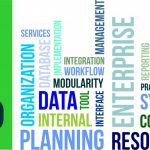A LITTLE GOES A LONG WAY: POST ERP IMPLEMENTATION
A little goes a long way: Post ERP implementation. Keep the lines of communication open and listen to the users
Author: Kevin Kress
As project managers, when implementing a new ERP project we go a long way in our detailed analysis to interview the client. We arrange meetings and gather groups in a boardroom, laptops in hand and whiteboards at the ready.
We listen, make notes, draw pictures and in partnership with the client, develop a vision of the implementation. The scope of work is defined that theorizes the vision to the best of our collective practical experience.
Once the scope of work is accepted, we begin our process of product configuration, data conversions, training, and implementation. We do our job right, the vision comes to life, and our client goes live with the system. Happy faces and standing ovations all around!
Post implementation has pulled back and the support calls have tailed off. All is quiet and all is good, then as Project Managers we go on to the next project.
From the client’s perspective, management signs off on the project. Management is seeing the expected results, tracking their business, running their reports and enjoying greater visibility into the day to day activities.
However, for the everyday users they are just beginning to live with the system. As they battle test the workflow, they are an invaluable source of feedback. That’s when the real room for improvement can occur. It’s important that suggestions or idea’s that come from the users be documented and tracked and responded to, no matter how seemingly minor . Each idea potentially represents a gain in efficiency and minimizing a margin of error.
Two things happen when this occurs, cost benefits arise from improvements in workflow, and just as important, the users begin to buy into the new system and start to take ownership.
Something often overlooked in an implementation is that whatever system was in place before had probably been in place for years prior, and the users had grown familiar with the process. With the new system in place, you don’t want them waxing nostalgic about the old days. You want them looking ahead, and the way to do it is by listening and responding.
A few examples are, a request from the accounts receivables clerk to add a status field to a payment receive screen. It’s a simple add-on that saves three clicks when processing payment receipts.
A user has to scroll over three columns on a sales order line. A quick screen editing change puts a smile back on their face.
Another client brings on a product line that shifts the dynamic of the order process from a strict buy-to-order process to mixed inventory/buy-to-order process. We propose a flag to the sales order to enable selectively choosing which items will have purchase orders generated for them. This simple fix dramatically improves the efficiency of the flow.
Then there is the client whose sales order picking process needed a tweak of the screen to enable them to sort in their unique way. Once again, voila magic. Done. This simple change improved the customer’s efficiency and negated the margin of error in the picking process.
All of these suggestions came post implementation after the client was using the system. All were simple changes that had a positive impact on the customer’s workflow, and all were addressed quickly and at low cost.
When you implement with a client, you are not building a fixed solution; you are starting a relationship, a relationship that, if successful, is open and fosters growth. Offer the ability to be responsive and flexible to the ongoing growth of the client as their business model evolves.
And as in any relationship, communication is the key. Don’t assume that if all is quiet, all is good. Give them a call, talk to the users, the people who push the system to its limits and listen. If it’s not possible to get down in the trenches, talk to the managers and supervisors.
You’re not looking for major projects, but simple things that make their lives easier. You’ll soon come to find “a little does go a long way”.
About the Author:
Kevin Kress, ERP Implementation Specialist at Profit Solutions International
Kevin is a 10-year veteran of implementing ERP solution in manufacturing, distribution and mixed environments. His prior background includes newspaper publishing, commercial printing, IT systems administration, product engineering and project management. From fit gap anaylysis through project sign-off and post implementation support, Kevin’s approach is to embed himself in the user experience in order to provide the best solution. He considers himself a partner with all of the clients he has had the honour to work with.
Kevin Kress can be contacted at kkress@psierp.com





Good writing Kevin!